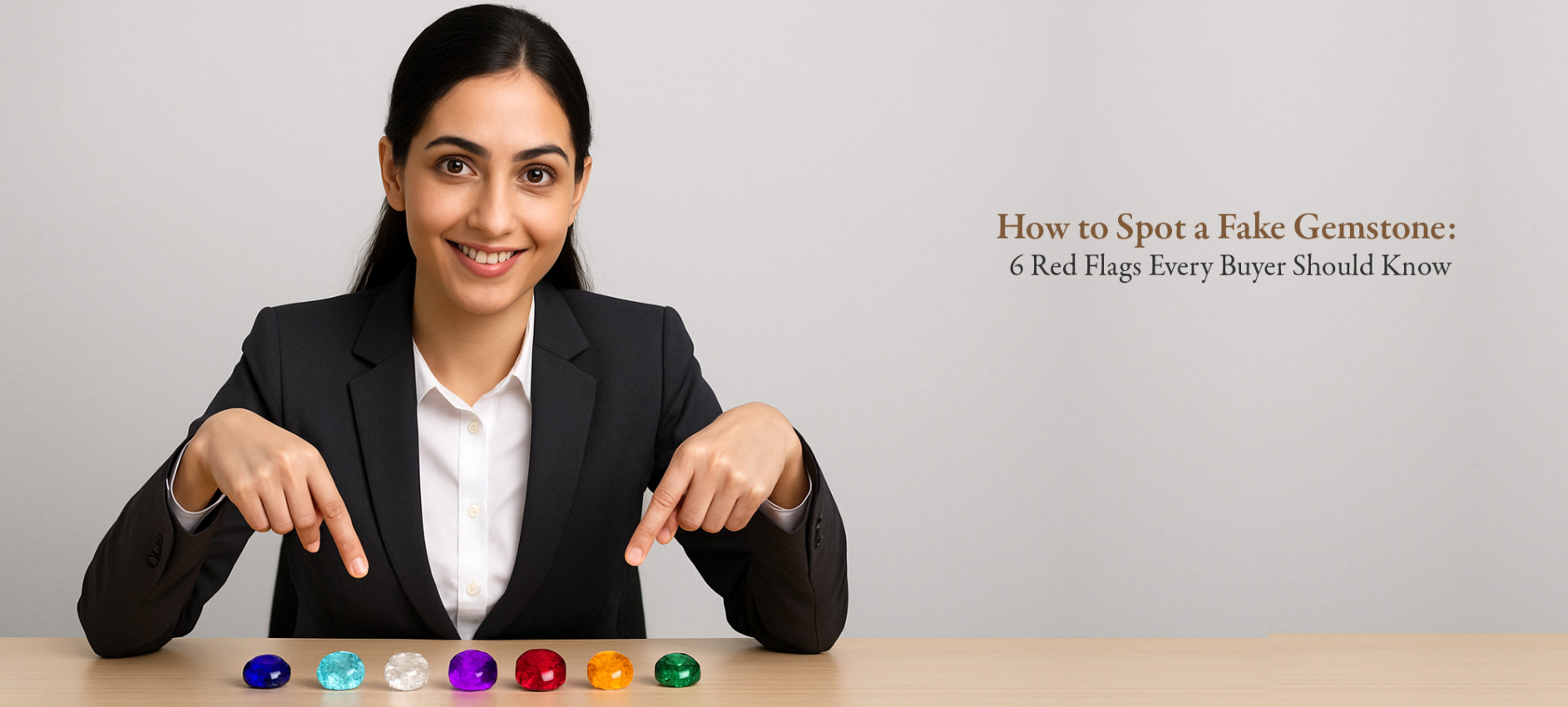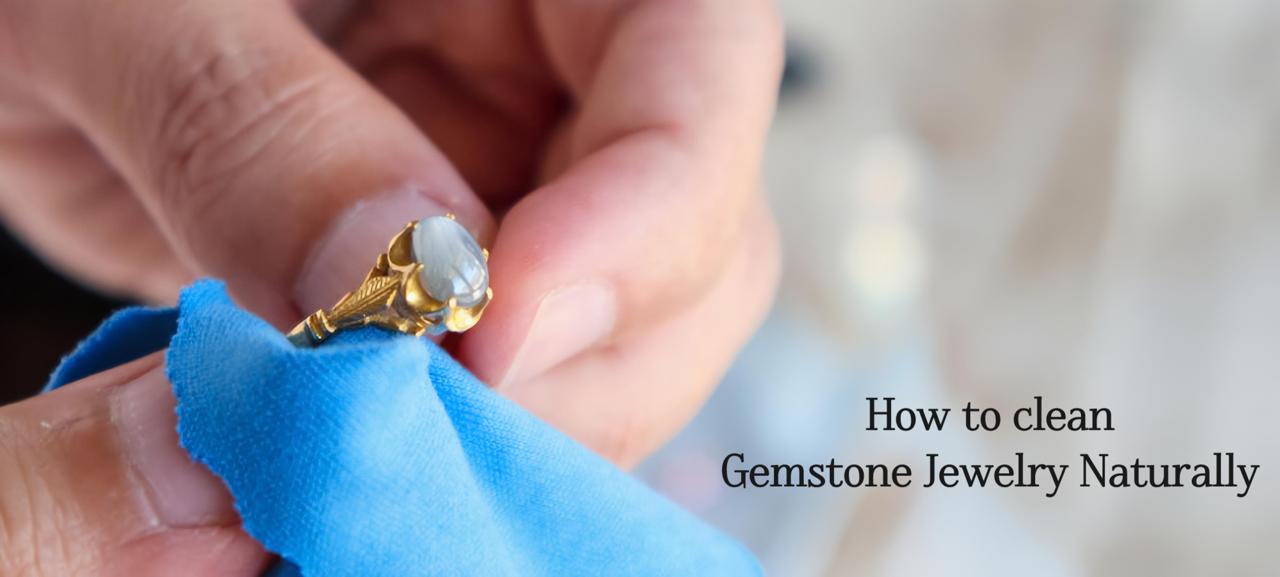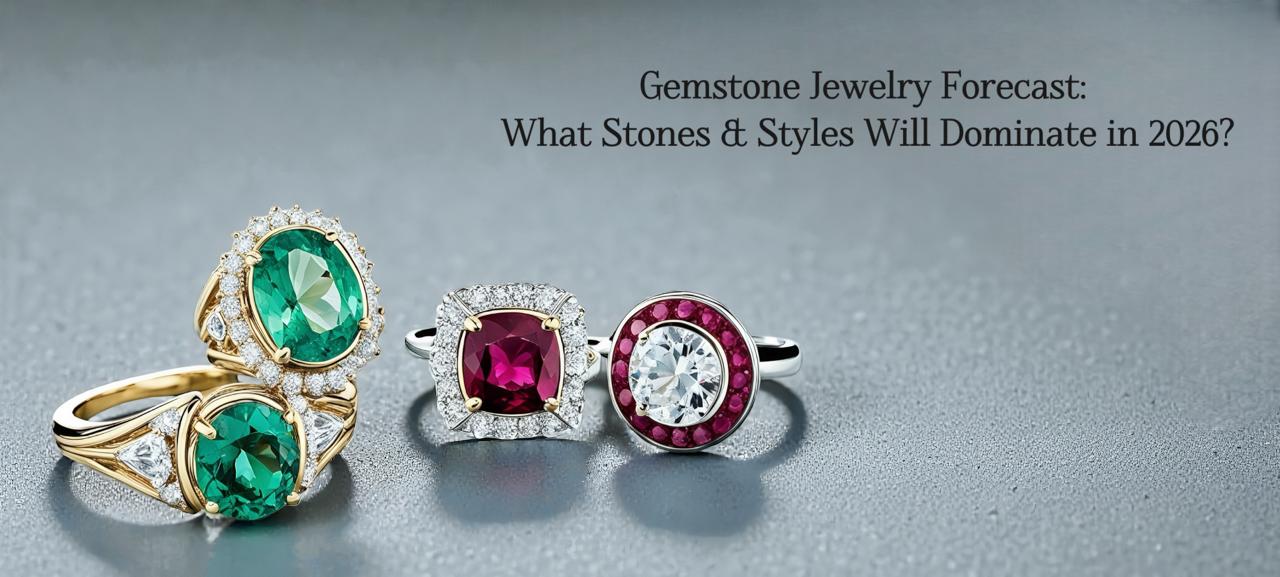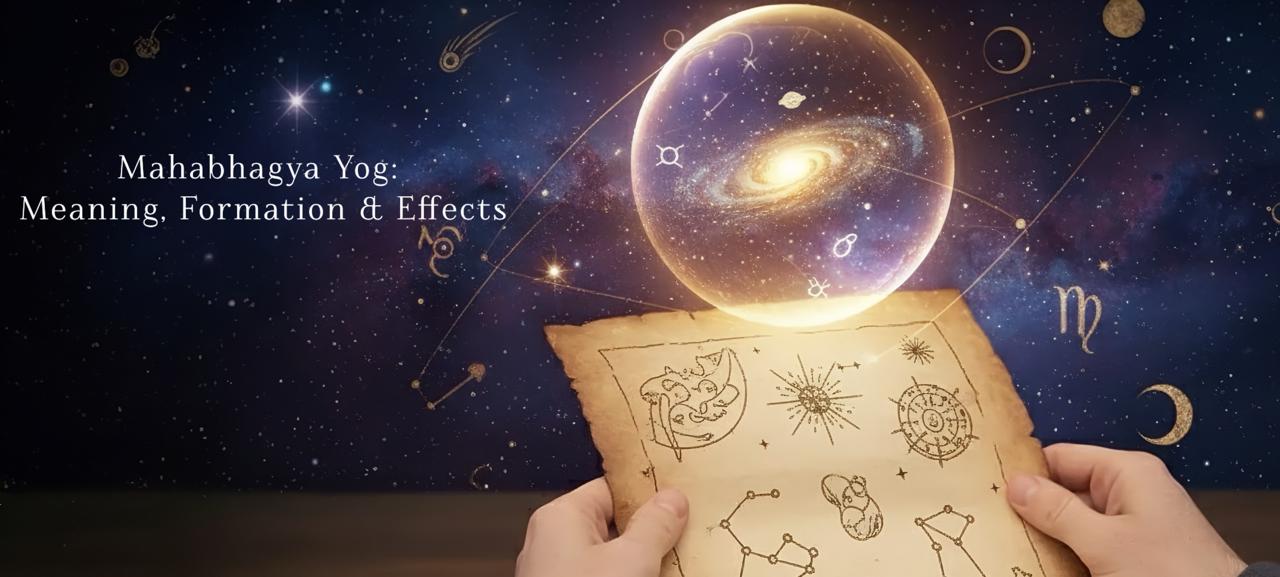 Categories
Categories 
No matter whether you are purchasing a gemstone because of the astrological effects, energy alignment, or just because it is beautiful, authenticity is something you cannot do without. Fake gemstones do help degrade the spiritual and emotional value of the purchase, as well as you will face the loss of lots of money. Among all the synthesised stones, simulant and clever imitations on the market, it is important to know what to look out for.
So, here are some of the factors that will help you distinguish between fake vs genuine gemstones. These ways will help you avoid a scam when buying gemstones.
Want to know: How to Avoid Scams When Buying Gemstones? How to recognize fake gemstones?
Well, Fake stones interfere with this vibrant purity and destroy brand faith. This is why determining the red flags is important to both a long-term collector and a novice buyer.
Your cheat sheet to identify a faker in the gemstone world is here:
Gemstones are found in nature with internal inclusions, and their flaws show their origin story.
When a stone looks perfect with no appearance of any inclusions, it is probably synthetic or processed.
One minute hint: Examine under strong light using a jeweler loupe to find natural inclusions such as needles, veils, or zoning in colors.
Also Read - Important Facts You Need To Know About Trendy Gems Before Purchasing
Harvesting of the authentic gemstones is expensive. When the price is low and sounds too good to be true, then it is most likely so.
Vendors of synthetic stones prefer to conceal poor-quality impersonators behind the flash terminology, such as the Swiss Blue Topaz or the Burmese Ruby , and the gems have no official certification.
Buyer intelligence: Compare all the prices in good outlets, and inquire about the market’s benchmarks.
Reliable vendors use laboratory gemological reports such as GIA, IGI or GRS.
An uncertified stone lacks authentication in origin, treatment, as well as the grade of quality.
Energy-based reminder: Unless a source of authenticity can be proven, the energetic dimension you are investing in can be compromised.
You can also cross-check your gemstone certification this way: How to Verify My Gemstone Report?
When it comes to fakes, many are colored or painted in order to look intense.
The treatments are usually not permanent, particularly on jewelry that is worn regularly.
Spot check: Put a drop of acetone on a cotton swab and rub the stone with it. When there is the shedding of color, it is dyed.
Synthetics are frequently found to be lighter to the touch as compared to natural ones.
The authentic gems have a higher tendency to be dense and cool.
Astro connection: This physical touch supports the elements' balance, so many astrologers believe that you will feel something with natural stones.
Red flags are sellers who are not straightforward with their responses, hurry the purchase, or do not want to check their certification.
Genuine sellers enlighten and enable customers to make a satisfied purchase.
Trust cue: Inquire the seller about the origin of the stone, whether it has undergone a treatment or not, and its energetic alignment. The answer to their response says so much.
Further Reading - Why Buy Gemstones Online from Navratan?
Type | Definition | Red Flag | Can It Be Used Astrologically? |
Synthetic | Lab-created but chemically identical to natural gems |
Lack of energetic vibration | Generally avoided |
Simulant | Imitates appearance but differs chemically | Often made of glass/plastic | Not suitable |
Fake | Misrepresented entirely, usually for fraud | No certification, vague sourcing | Strongly discouraged |
In the view of gemstone believers, the reality extends past mineral content. It is believed that the natural stones and their corresponding vibrations resonate with planetary bodies, chakras and emotional healing. It seems that putting on an artificial gemstone is to be in the wrong frequency.
Energetic mismatches can occur in the form of:
More to Know - Why do Gemstones Hold an Important Place In Indian Culture?
There are real gemstones, such as diamonds, as well as ruby stone , which fluoresce in UV light.
Artificial rocks are likely to have no response or a weird light.
It is not infallible, but it does give a convenient way of making quick checks.
Take a piece of glass (Mohs hardness ~5.5) and place it in contact with the gemstone, and very lightly scratch the glass with the gemstone.
With real gems, which have higher hardness than glass, such as sapphire ( rating of 9 ), a scratch will appear; fake gems won’t scratch the glass.
Pay attention, there are some softer natural stones that may be damaged by this test. Do get to know the hardness of the gem first.
Blow upon the stone. The natural gemstones are transparent because of their superficial characteristics.
Such fakes as glass or plastic can remain hazy for a few seconds.
Put a drop of water on the surface of the stone. When it does not collapse, it becomes most probable to be real. If it is quickly spreading, then the gem can be made of glass or plastic.
Also Read - Why Custom-Made Jewellery Is Gaining Popularity in Modern Times?

How to Clean Gemstone Jewelry Naturally: Easy & Effective Tips
December 5th, 2025

Gemstone Jewelry Forecast: What Stones & Styles Will Dominate in 2026?
December 1st, 2025
Why Shani Can Make or Break Your Life — The Untold Astrological Truth
December 1st, 2025